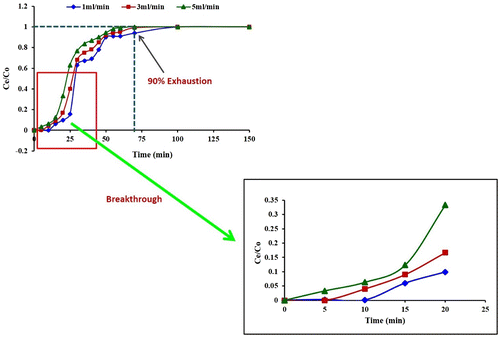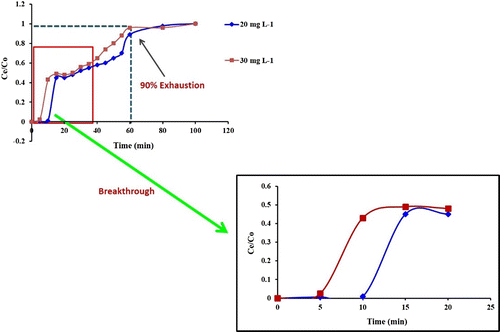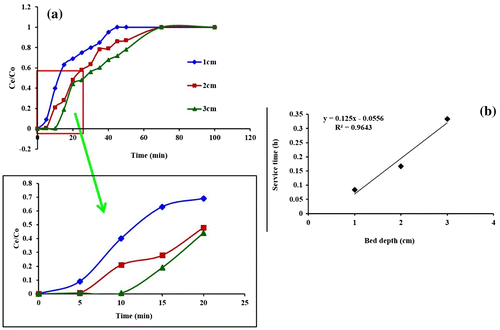Figures & data
Table 1. Conditions of F-AAS for Pb(II) ions determination.
Figure 1. Breakthrough curves for different flow rates (initial Pb(II) ion concentration: 10 mg L−1; bed height: 2 cm).

Figure 2. Breakthrough curves for different Pb(II) ion concentration (flow rate: 1 mL min−1; bed height: 2 cm).

Table 2. The Thomas and BDST model parameters for the biosorption of Pb(II) on P. eryngii fungal biomass.
Figure 3. (a) Breakthrough curves for different bed height (flow rate: 1 mL min−1; initial Pb(II) ion concentration: 20 mg L−1) and (b) Bed depth service time plot for the adsorption of Pb(II) ions by fungal biomass in column.

